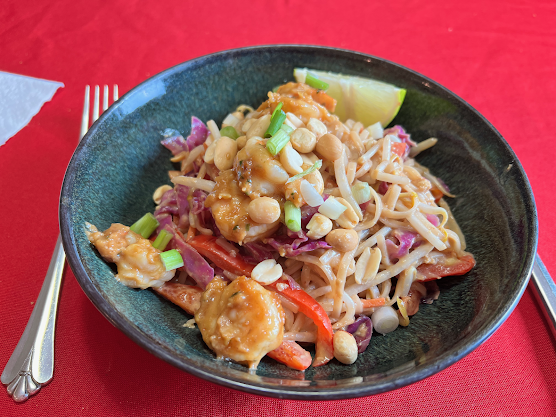Potassium Rich Foods
Sweet Potatoes: 694 mg
Tomato Sauce: 1/4 cup 664 mg
Beat Greens: 1/2 cup 644 mg
Beans: 1/2 cup 600 mg
Yogurt: 8 oz 579 mg
Clams: 3 oz 524 mg
Prunes: 530 mg per 3/4 cup
Carrot Juice: 500 mg in one 3/4 cup
Molasses: One tablespoon of blackstrap molasses (the thick, dark kind) has nearly 500 mg of potassium
Fish: 500 mg of potassium per 3 ounce serving
Soybeans: half a cup of cooked soybeans have nearly 500 mg
Winter Squash: 448 mg per half cup
Bananas: one medium fruit does pack more than 400 mg
Milk: 382 mg per cup
Orange Juice: 3/4 of a cup of orange juice delivers 355 mg
Sweet Potatoes: Surprise—sweet potatoes, not bananas, rank highest on the list of foods that are high in potassium. One sweet potato packs a whopping 694 mg of potassium and only 131 calories, plus loads of fiber, beta-carotene, and energizing carbs. Baked, fried, grilled, mashed, or stuffed, sweet potatoes are one of the healthiest and most delicious foods you can eat.
Tomato Sauces: Fresh tomatoes are great, but tomato paste and puree are better sources of potassium. One quarter cup of tomato paste delivers 664 mg of this vital mineral, while one half cup of puree comes in at 549 mg. Tomato juice itself has just over 400 mg. So if you love cooking with tomatoes and want to get more potassium into your diet, make spaghetti sauce more often!
Beat Greens: If you've ever bought fresh beets and tossed the greens in the garbage, time to change your ways. Those cooked, slightly bitter greens deserve a place at the table in part because they pack a whopping 644 mg of potassium per half cup. Antioxidant-packed beets are also a great source of folate, raw or cooked!
Beans: White beans lead the pack when it comes to potassium, with half a cup delivering nearly 600 mg, but kidney and lima beans, as well as lentils and split peas, are all respectable sources. All beans are good for your heart and appear prominently on our list of the 20 best foods for fiber so it's smart to make beans a much bigger part of your diet.
Yogurt: Eight ounces of plain old non-fat yogurt contains 579 mg of potassium, while low-fat, whole milk, and cultured buttermilk—yogurt's tangy cousin—have a little less. Delicious ways to use yogurt include mixing it with granola at breakfast, using it instead of mayo on sandwiches and in salads, and swapping it for whipped cream on desserts. Bonus: Most yogurt products contain probiotics, natural bacteria that can aid digestion and keep your gut healthy.
Clams: Canned or fresh, 3 ounces of clams pack 534 mg of potassium and have the highest concentration of vitamin B12 of any food. Use them to make seafood pasta or traditional New England claim chowder.
Prunes: Prune juice is no joke when it comes to potassium, delivering 530 mg per 3/4 cup; half a cup of stewed prunes have nearly 400 mg. While you know prunes are good for regularity, you may not know that eating more of these dried plums can help keep your bones strong too. In one study, women who ate 10 prunes a day had significantly higher bone density than women who ate dried apples.
Carrot Juice: The juicing trend means more people will be getting their potassium from carrot juice, which packs over 500 mg in one 3/4 cup. Besides their potassium benefits, carrots and other orange-colored fruits and vegetables are also great for your eyes and vision.
Molasses: Looking for a nutrient-packed alternative to sugar or honey? One tablespoon of blackstrap molasses (the thick, dark kind) has nearly 500 mg of potassium and a respectable amount of iron and calcium.
Fish: Meaty fish like halibut and tuna have nearly 500 mg of potassium per 3 ounce serving, but cod and even farm-raised rainbow trout have plenty of potassium too. But potassium isn't the only reason to add more fish and seafood to your diet. Evidence is mounting that regularly eating fish, not taking fish supplements, can increase your lifespan, thanks in large part to the healthy fats in fresh fish; a high fish diet can even reduce your risk of death by heart disease by 35%, according to Harvard researchers.
Soybeans: Unprocessed soy products (think edamame, not soy powder) are a great source of protein and can also fight inflammation in the body. Bonus: half a cup of cooked soybeans have nearly 500 mg of potassium.
Winter Squash: Winter squash like spaghetti squash are a dieter's dream: it has less than 50 calories per serving, yet contains plenty of vitamin A and filling fiber. But winter squash is also a great source of potassium, with 448 mg per half cup.
Bananas: Everyone thinks of bananas when they think of high-potassium foods, and one medium fruit does pack more than 400 mg of this heart-healthy mineral. But bananas are also the ultimate hunger buster, packed with Resistant Starch, a healthy carb that fills you up and helps to boost your metabolism.
Milk: Milk is a surprising source of potassium, with 382 mg per cup for the non-fat or skim version (1% and whole milk has a little less). If you're not a fan of milk, try adding this high-calcium fluid to smoothies and healthy milkshakes.
Orange Juice: One of the healthiest additions to your breakfast table, 3/4 of a cup of orange juice delivers 355 mg of potassium. Orange juice, especially the fresh-squeezed variety, is a good source of calcium, folate, and several B vitamins.


